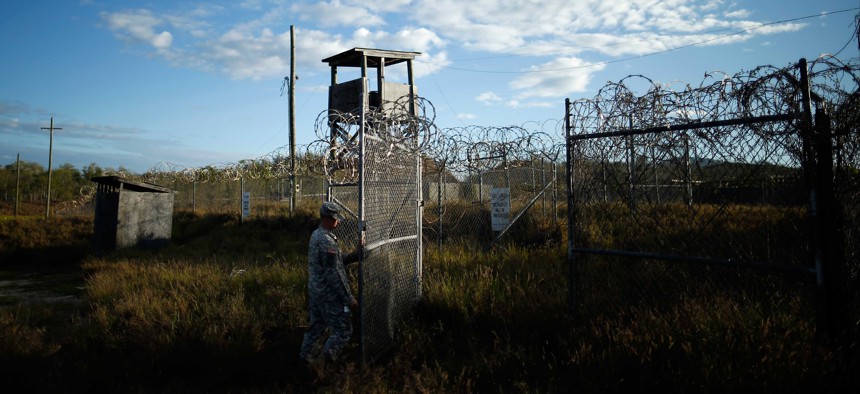
A U.S. soldier closes the gate at a now-abandoned detention facility at Naval Station Guantanamo Bay, Cuba, Nov. 13, 2013. Charles Dharapak/AP
Special Report: Beyond Guantanamo
President Obama has begun his final push to close Guantanamo. But America’s bigger challenge is deciding what to do with tomorrow's prisoners in a war without end.
As images of a man being burned alive in a cage flashed across the Internet in February, word spread through the Pentagon that the Islamic State had killed a Jordanian pilot. Over and over, Paul Lewis, the Defense Department official charged with closing Guantanamo, was asked the same question: “Did the pilot have an orange jumpsuit on?”
“And I had to say, ‘Yes, he did,’” Lewis said.
ISIS deliberately dresses its victims in the orange uniform synonymous with the U.S. military prison in Guantanamo Bay, Cuba. Before it immolated Jordanian First Lt. Moaz al-Kasasbeh, the terror group chose the garish costume for the broadcasted beheadings of American journalists and other non-combatants. On Tuesday, ISIS released its latest graphic video, which purports to show 15 Iraqi men being executed in gruesome ways: drowned in a cage, blown up by a close-range rocket-propelled grenade, or beheaded by explosives detonated around their necks. They all wore orange jumpsuits.
To Lewis and the Obama administration, each person ISIS executes in an orange jumpsuit is a visceral reminder of why the detention facility must be closed — and a barrier to doing so.
ISIS has raised the stakes just as President Barack Obama takes his last, best chance to close Guantanamo.
Click to read the complete special report from Defense One here.




